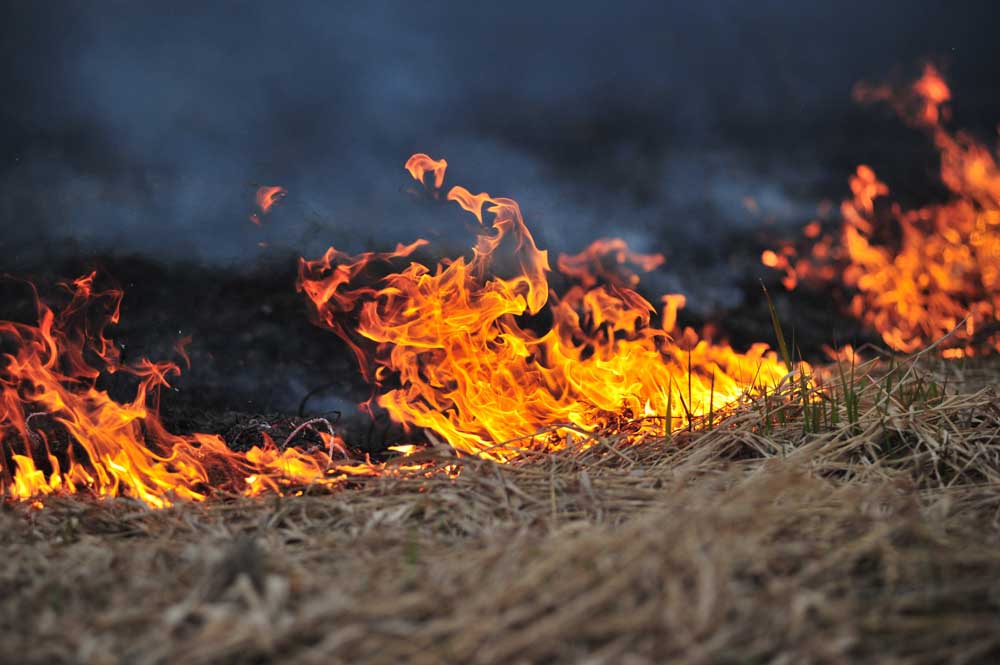Codling moth damages apples
Published 12:00 am Tuesday, October 14, 2014

- Meg Roussos / The BulletinCodling moth damage is often visible on the outside of apples as well.
Fall has arrived, and the harvest season is here. For those of us with apple or pear trees, the familiar thump of the fruit falling on our roofs, patios, decks and yards has been happening for weeks now. But most of us don’t realize that apple and pear trees in Central Oregon have become pest-ridden with codling moth.
Amy Jo Detweiler, associate professor in the horticulture department at the Oregon State University Extension Office in Redmond, wants to educate homeowners on this problem.
“Most people would simplify it by (calling them) wormy apples,” said Detweiler. She estimates that at least 90 percent of apple and pear trees in Central Oregon have this problem and says it’s been around for a long time.
“I am not aware of any apple trees that don’t,” she said.
How to tell
Diagnosing your trees is relatively simple. Apple, pear, larger crab apples, peaches and apricot trees can become infected. If the fruit is infested, there should be a small area where you see the frass, or excrement, of the larvae. Detweiler said this looks like wet sawdust. If you knock that off, you can usually see where the larvae tunneled into the fruit.
The sting, or entry hole, usually appears “on the side, or on the flower end, the bottom of the apple, or where two apples touch,” said Detweiler.
Codling moth larvae feed on the seeds of the apple later in the season. This time of year, you start seeing exit holes, where the larvae left the fruit.
Timing is everything
“Once the larva is in the fruit, there is no management as far as spraying or anything,” said Detweiler. She suggests waiting until spring, before the next generation of moths have hatched.
“Timing is the most critical part of trying to manage the codling moth,” said Detweiler. “If you miss on the timing, you’ll spray and have no effective management.”
Temperature and weather determine when the moth will affect developing fruit. It happens at a different time every year depending on temperatures, usually at the end of May or beginning of June, right after petals have dropped off the blossoms. It typically has to be above 60 degrees in the evening for a couple of days in a row before the moths start laying eggs. The OSU Extension Service has a degree-day calculation on its website that’s designed to tell you when the egg hatch occurs. Knowing when the hatch happens helps you more effectively treat the tree.
Another indicator of knowing when to spray could be using a pheromone trap. They hang in your tree and help indicate when the moths are flying. Detweiler says it’s not really effective in stopping damage, but it’s useful and affordable.
How to treat it
Detweiler suggests trying some of the more organic ways, by using a biological insecticide or a beneficial virus like CYD-X or Spinosad.
“(We’re) seeing very good success with this particular product,” said Detweiler. She cautions that you have to spray at the right time and stay consistent with when you spray. These sprays don’t have a preharvest interval, meaning there isn’t a wait time for the fruit — it’s safe to eat right after you’ve sprayed.
“It’s very specific to the larvae — it doesn’t harm humans or pets,” said Detweiler.
Another way to treat trees is a more preventive approach. Bagging is a much more time-consuming treatment but seems to be just as effective.
“You’re taking a paper bag, wrapping it around the fruit as the fruit starts to develop so that the adult moth can’t lay its eggs on the fruit,” explained Detweiler.
She said she tried using clear mesh bags so that the light got through to the developing fruit. In the Asian pear tree that she tried this on, she was also spraying. She said that with this method, around 70 percent of the fruit on the tree was manageable.
Trunk banding can be another deterrent for moths and can be done in the fall. The band, made of cardboard, is designed to prevent the insect from pupating in the ground or the bark over the winter. Detweiler suggested using a cardboard band with a nontoxic sticky substance, such as petroleum jelly, to catch the insects. She suggested that it worked better on smooth bark trees, rather than rougher barks.
What to do with the apples
Some research suggests that you can eat the infected apples by simply cutting off the damaged portion and using what’s left. Detweiler cautions that the larvae might have left behind toxins in the fruit and suggests not eating it.
“It’s not an easy pest to get rid of,” said Detweiler. “If you’ve got a neighbor that isn’t managing it, it’s not going to help. … It’s going to take a community effort.”
Removing infected apples helps, even if they’re on the ground. Keep them out of your compost piles; dispose of infected apples in your yard waste.
“The best option is to be prepared for next spring,” said Detweiler.
— Reporter: 541-383-0351, swilkins@bendbulletin.com








